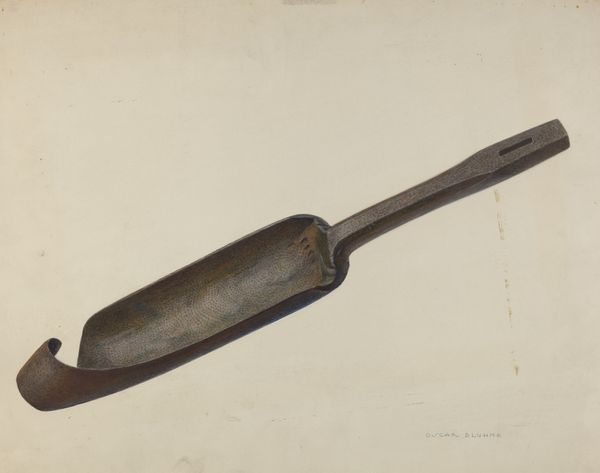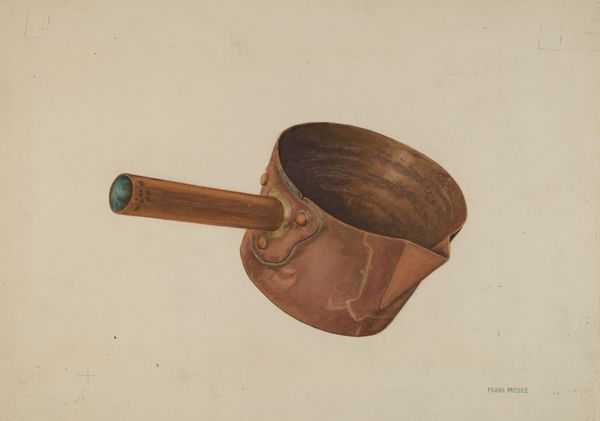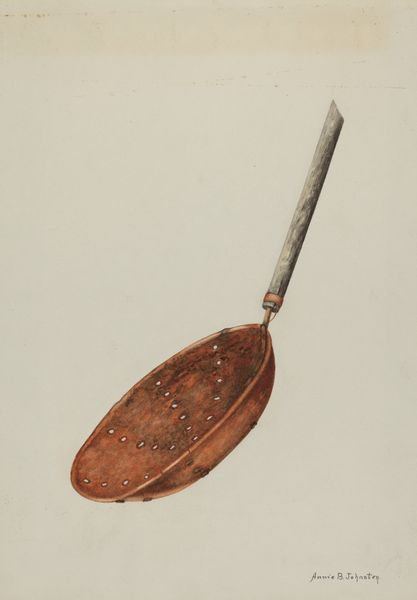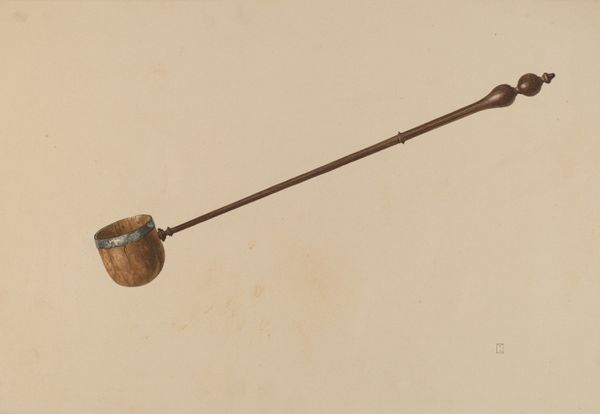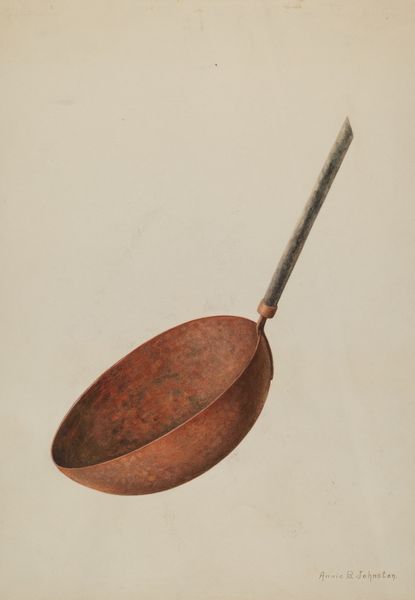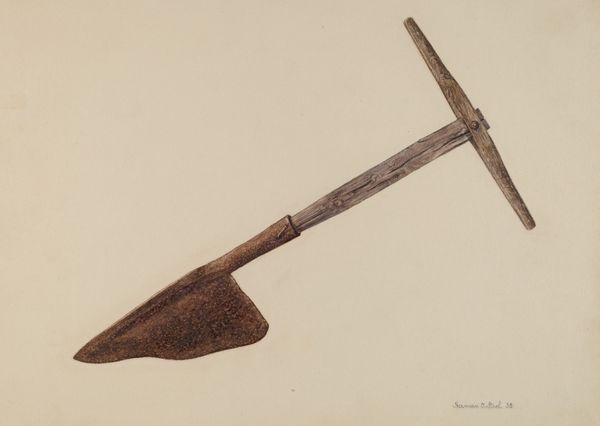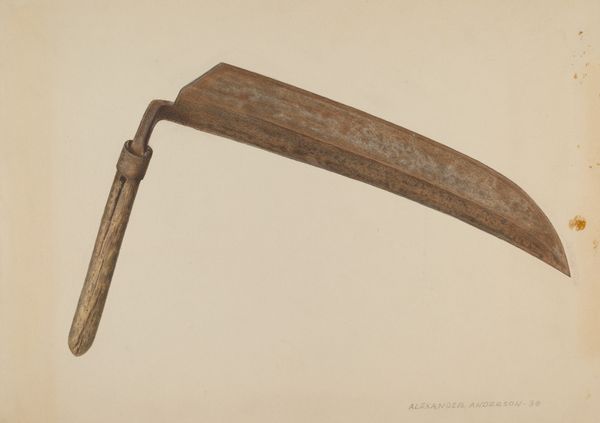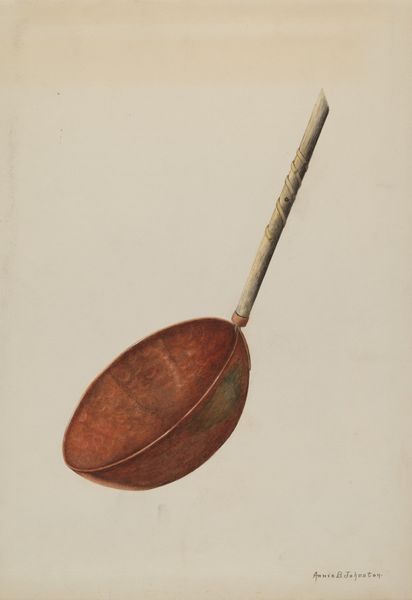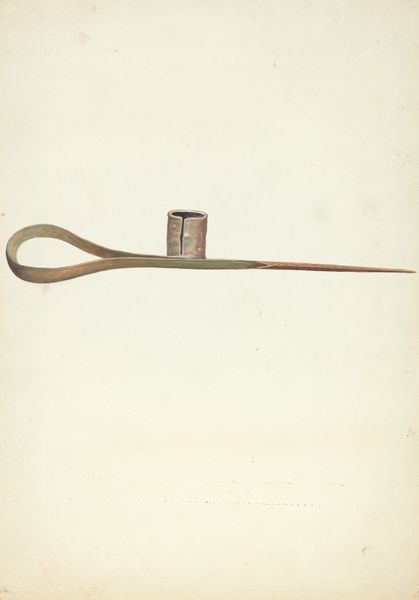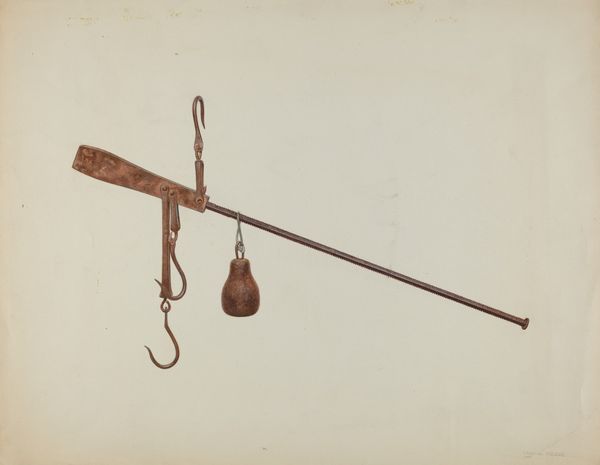
drawing, watercolor
#
drawing
#
charcoal drawing
#
oil painting
#
watercolor
#
watercolour illustration
#
charcoal
#
watercolor
#
realism
Dimensions: overall: 32.1 x 40.2 cm (12 5/8 x 15 13/16 in.)
Copyright: National Gallery of Art: CC0 1.0
Curator: Let's consider Charles Garjian's "Ladle," dating from around 1939. He employs watercolor and charcoal in its depiction. Editor: My initial impression is one of aged utility. The textures really speak to the wear and tear of repeated use – you can almost smell the soups it stirred. Curator: Absolutely. It goes beyond mere depiction. A humble ladle, but here, it evokes domesticity and ritual. Note the wood grain of the handle and the sheen on the copper, the play of light implying a lived experience, all creating an icon of home. Editor: It's fascinating to think about how Garjian chose to portray this specific object. Was he thinking about craft, domestic labor, or perhaps the means of sustenance? What were his available materials, his relationship to labor and daily life that drove him to memorialize a basic implement of the kitchen? Curator: Considering its date, the shadow of the Great Depression surely hangs over it. A ladle symbolizes not just food, but the very act of providing, a potent symbol in times of scarcity and want. The darkened interior is reminiscent of countless meals prepared. Editor: And look at the twisted wire that holds the ladle; this isn't just a utilitarian object. This piece reveals hand craftsmanship—a sort of artistry elevates it. What were the material limitations of the time, or the aesthetic considerations, that inspired this choice of construction? Curator: It could also hint at deeper symbolism, a vessel that not only holds physical sustenance but also nourishes the soul. Think of the communal act of sharing soup, the warmth it provides. Editor: I see your point about sustenance. However, seeing that twisted support also tells me that the maker understood materials in detail: knowing how copper can be formed. Curator: So, we journey from simple utensil to poignant reflection on home and labor during challenging times. It prompts us to value the familiar objects we tend to overlook. Editor: Yes, seeing the artistry that goes into an everyday object. Garjian calls us to examine material, and to look to the everyday and find creativity inherent in it.
Comments
No comments
Be the first to comment and join the conversation on the ultimate creative platform.
